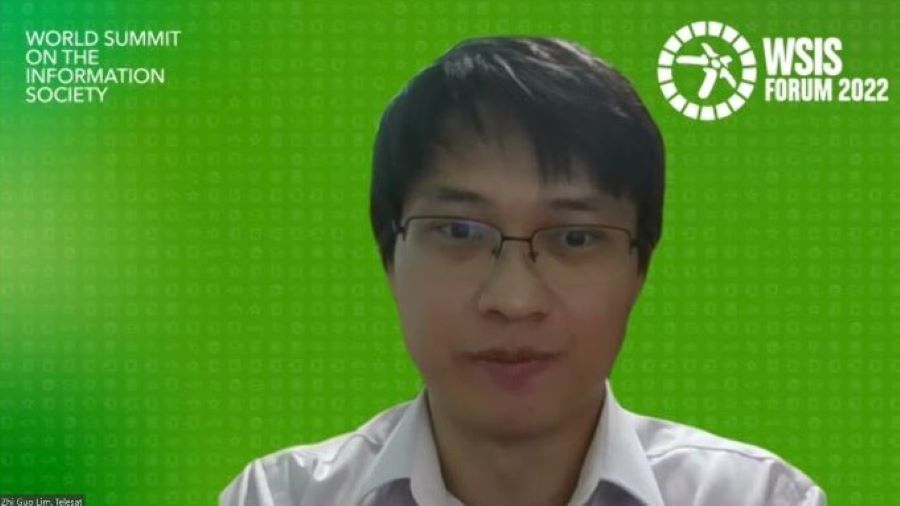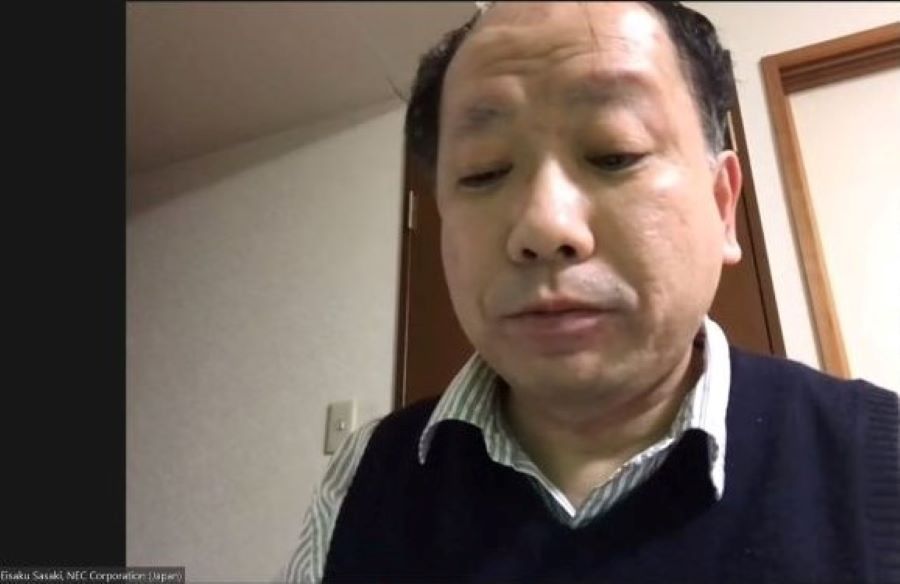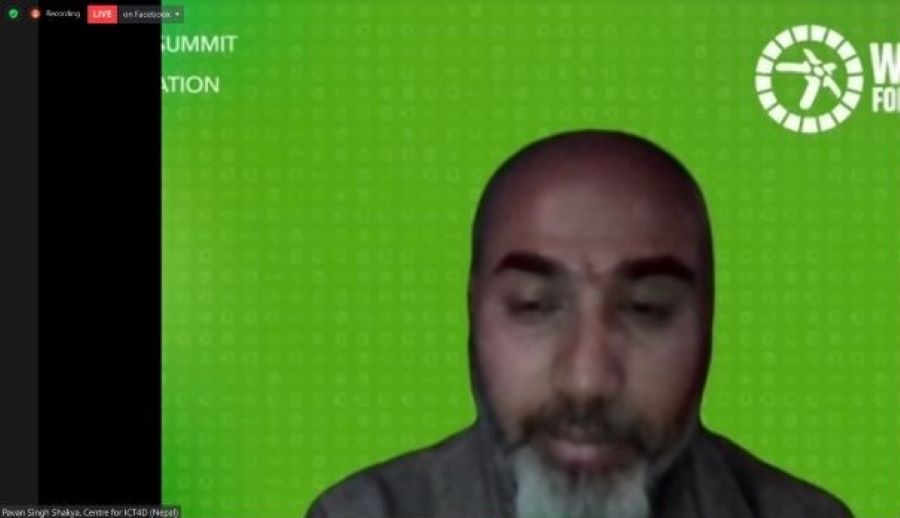Urgently penetrating low-cost dependable broadband to isolated communities
Global Plan Inc.
Session 222
Optical Fibre, LEO satellite, and Fixed wireless
The latest findings from the ITU estimate that 37 percent of the world’s population – or 2.9 billion people – have never used the Internet, of which 96% live in developing countries. Before connecting all the world’s population to the Internet, the social loss from Pandemics and Disasters can not be well reduced, Inequality can not be suppressed, and the Information Society can not be truly global.
Moreover, the attempt to change the status quo by force can not be overcome without exchanging information and individual views from every corner of the globe. A consensus-based sustainable planet can not be created without everyone’s participation to maintain order without being dictated by great powers and huge capital.
However, as ITU estimates that US$ 428 billion is required to connect 90% of the remaining 3 billion people to broadband internet, connecting the unconnected is often described as an unprofitable exercise.
So, it is important to best utilize the following three key technologies for connecting the remaining 2.9 billion people of the globe urgently and at the lowest cost.
(1)A low-cost optical fibre solution is recently available that can be easily and quickly deployed from underground to surface to water to air in a DIY manner mainly by non-skilled local communities. The cost of cable and its installation was reduced by 88% compared to the solution using a conventional cable that needs to be installed deep underground using heavy machinery. The new solution meets the three new ITU-T Recommendations; the executive summary of the 2020 Report of the ITU-D Rural Connectivity Group states "Recommendations ITU-T L.163 (2018), ITU-T L.110 (2017) and ITU-T L.1700 (2016) are three of the most popular and useful recommendations in addressing the Question on rural connectivity."
(2)Low Earth Orbit (LEO) satellite is under development. Examples are found at ADF-18/INP-9 and ADF-18/INP-10, 2021. A solution states "with High Throughput, Low Latency, Always On, and Affordable", where the technology is said "more cost-effective for ubiquitous reach than fibre and microwave alternatives." Another solution explains "connect towns, villages, and local and regional municipalities in those hardest-to-reach areas, playing a critical role in bridging the digital divide."
(3) Fixed wireless backhaul solution It is stated that “since the introduction of 4G and 5G, service providers have been expanding their mobile wireless services. One large challenge they face is how to rapidly deploy high-speed, flexible, scalable and reliable backhaul networks with optimized CAPEX and OPEX”. “Reliable field-proven wireless backhaul solutions have been developed and provided to service providers around the world”.
This session will try to objectively and fairly understand the strengths and weaknesses of their technical performance and implementation for urgently and nation-widely closing the urban-rural digital divide. It is needed to reduce the CAPEX/OPEX of the solution to a level low enough to allow simultaneous mass deployment of the connectivity into multiple local areas in developing countries, without demanding prohibitively huge investment.
The effort of urgently and affordably penetrating broadband backhaul connectivity should continue as a key to building an inclusive information society, achieving the WSIS targets, and preventing enormous social loss.

Dr. Haruo Okamura was a vice-chairman of ITU-T SG15, and ITU-T TSAG, currently the chair of IEC SC86C (Fibre Optic Systems and Active devices).
He developed an unprecedentedly affordable, lightweight but very robust DIY-based Optical Cable Solution targeting to quickly, nation-widely connect the unconnected population. It, not only copes with Pandemics and Disasters, but it helps generate a global consensus resisting attempts to change the status quo with huge power and capital.
It can be easily installed on-surface to underground to air to water. The solution meets the three new ITU Recommendations under his editorship that were identified as "the most popular and useful in addressing the Question of rural connectivity" in the report of the ITU-D Rural Connectivity in 2021.
As the moderator of Session 222, he wants to seek how Fiber, LEO Satellite, and Fixed Wireless nation-widely and quickly close the urban-rural digital divide in a complementary manner.
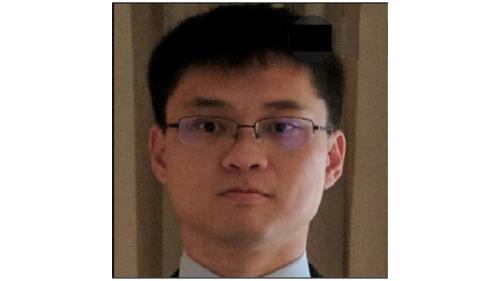
Zhi Guo leads Telesat’s engagement with regulators in Asia Pacific on the new Telesat Lightspeed market access, spectrum policy, ITU-related activities and other regulatory requirements. Prior to joining Telesat, he was with the Infocomm Media Development Authority and the Defence Science and Technology Agency. Zhiguo holds a Master’s and Bachelor’s degree from the National University of Singapore.
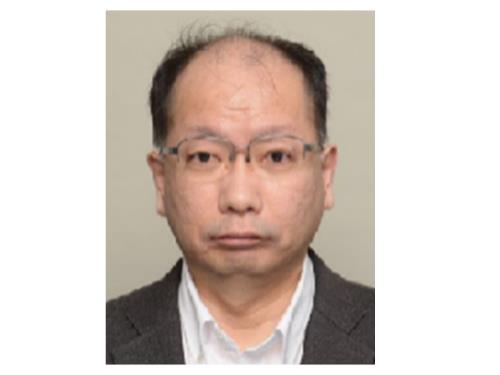
Eisaku Sasaki received the B.E. degree from Osaka University, Japan in 1986. He joined NEC Corporation, Japan in 1986. Since joining the company, he has been engaged in the development of microwave and millimetre-wave radios which are used mainly as mobile backhaul system today. He is currently an Executive Professional in Wireless Transport Development Department. His research interests include error-correcting codes, signal processing for higher-order modulation and spatial multiplexing systems including LoS-MIMO and Orbital Angular Momentum (OAM). He is a member of IEEE, ComSoc.
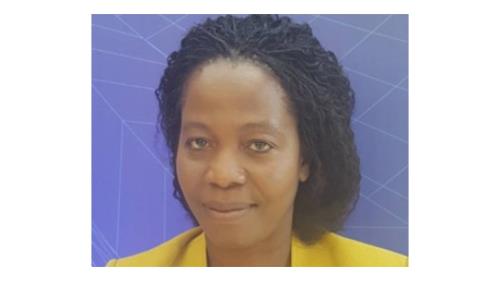
Caecilia Nyamutswa is a Legal Practitioner who is admitted to the Zimbabwean Bar, with extensive experience in the Telecommunications and Banking fields. She is the current Legal Director for the Postal and Telecommunications Regulatory Authority of Zimbabwe (POTRAZ) and is responsible for all Telecommunication related Legal matters and drafting legislation.
Prior to that, Ms Nyamutswa had held positions as the Head of Legal and Company secretary for standard Chartered Bank Zimbabwe and Head of legal and Investigations for ZB Financial holdings. She is current Rapporteur for Question 5/1 on ICTs for rural and remote areas. She has participated in the activities of the ITU Development Sector since 2012. Before joining the telecommunication and Banking fields, she had practiced law for ten years. Her experience has seen her serving on various corporate Boards in Zimbabwe.
Ms Nyamutswa holds a Master’s degree in Business Administration (MBA), a Master of Science in International Relations (MSc-IR), a Bachelor of Law Honours Degree (HBL) and a Bachelor of Laws Degree (LLB), all from the University of Zimbabwe.

Ms. Onica Makwakwa leads the multi-stakeholder engagement across Africa for the Alliance for Affordable Internet focusing on advancing good practices in policy and regulatory frameworks for affordable and meaningful access to broadband. She also convenes the Africa Summit on Women and Girls in Technology. A consumer, civil and digital rights advocate, Onica has managed and pioneered various national and international campaigns and policy change processes for women’s rights, civil rights, consumer rights, media and digital transformation initiatives. She brings a strong sensitivity and unique perspective to the dynamics affecting women, and other disadvantaged populations.
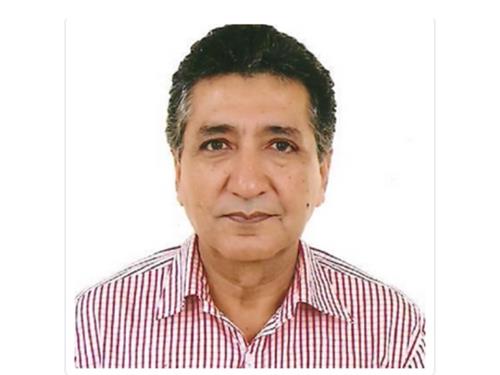
Mr. Bhattarai is a leading ICT and information economy expert from Nepal. Until recently, he was serving as the Vice-Chair of High Level Commission for Information Technology, an apex level ICT policy, planning and strategy outfit Chaired by the Prime Minister of Nepal.
Mr. Bhattarai played a key, leadership role in formulating e-Government master plan for the Government of Nepal launched in the year 2010 which has since culminated in a comprehensive ICT development project currently being executed by Office of the Prime Minister/ Council of Ministers, Government of Nepal. Mr. Bhattarai is also credited with the achievement of having provided leadership in delivering on one of the key, foundational components of eGovernment initiative namely the development of Government Enterprise Architecture/ Government interoperability framework (GEA/GIF) for the Government of Nepal.
Mr. Bhattarai has also been providing a range of advisory and consultative support in a number of automation initiatives of Government agencies. In addition, he also played a key role in helping the Government roll-out its first Government Cloud currently hosted by Nepal Information Technology Center (NITC)/Government Integrated Data Center (GIDC).
In addition, Mr. Bhattarai has also contributed towards the development of Nepal Trade Integration Strategy (NTIS) prepared by Ministry of Industry, Commerce and Supplies by providing advisory inputs for integrating IT/ITES-BPO into the national strategy.
Mr. Bhattarai played a lead role in drafting Nepal’s first IT Policy as a key member of the team formed by National Planning Commission, Government of Nepal. Mr. Bhattarai was also instrumental in preparing revised ICT Policy framework and National Broadband Policy for Government of Nepal in the year 2015.

George Hara is an archaeologist, entrepreneur and venture capitalist.
He is Co-Chairperson of BracNet(Bangladesh), and the chairman the AFF.
In 1984, Hara founded DEFTA Partners and became a partner at Accel Partners in the 1990s. Hara has helped to create and manage many IT firms as the chairman, board member, or shareholders of companies in the US, UK, Israel, and Japan, such as Borland (IPO in 1989), Zoran (IPO in 1995), Tradex (Merged with Ariba in 2000), Oplus Technologies (Merged with Intel in 2005), Broadware (Merged with Cisco in 2007), Transitive Technology (merged with IBM in 2008), and Fortinet (NASDAQ IPO in 2009).
In the public sector, Hara served as Senior Advisor to the Ministry of Finance in Japan. He is also the founder and Chairman of the Alliance Forum Foundation, an international organization in a Special Consultative Status with the UN Economic and Social Council, focused on the use of next-generation technologies to improve the standard of living in the developing nations, as well as, the advancement of research and debate into new standards of corporate governance suitable for post-industrial capitalism.
He has served on the boards of the San Francisco Opera, San Francisco Zoo, University of San Francisco, Tokyo Foundation, and Hara Research Foundation, which offers fellowships for interdisciplinary between life& computer science.
Hara was a UN Fellow and holds an LL.B. from Keio Univ. and an MS from the Graduate School of Engineering at Stanford University. He has been appointed Professor of Medicine, Osaka University Medical School (by courtesy).
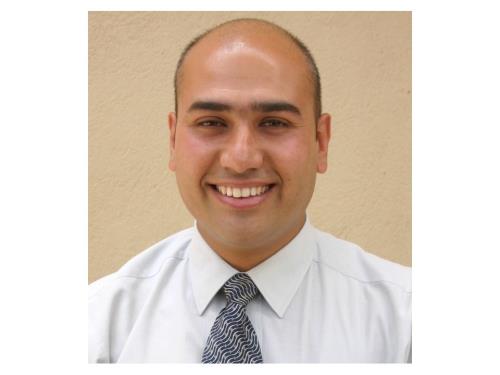
Pavan Singh Shakya has have been part of Nepal’s Digital/ICT industry domains over 25 years, which include Internet Service Delivery, Telecommunication (Mobile/Cellular), Social Entrepreneurship, Business Incubation, Policy Advocacy, and Technology Development and Implementation. Currently, I lead the Centre for Information and Communication Technology for Development (ICT4D). Our vision is to provision digital technologies for development and empowerment.
-
 C2. Information and communication infrastructure
C2. Information and communication infrastructure
-
 C3. Access to information and knowledge
C3. Access to information and knowledge
-
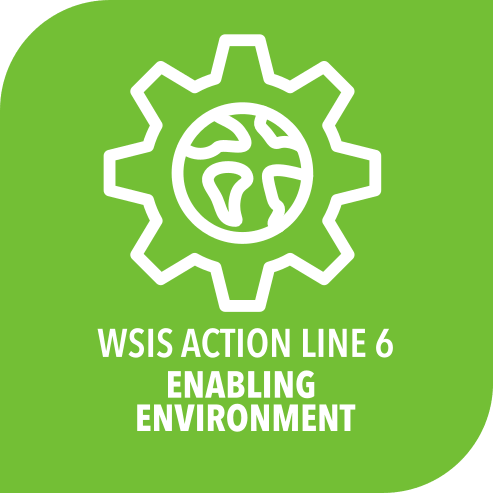 C6. Enabling environment
C6. Enabling environment
-
 C7. ICT applications: benefits in all aspects of life — E-learning
C7. ICT applications: benefits in all aspects of life — E-learning
-
 C7. ICT applications: benefits in all aspects of life — E-health
C7. ICT applications: benefits in all aspects of life — E-health
-
 C7. ICT applications: benefits in all aspects of life — E-environment
C7. ICT applications: benefits in all aspects of life — E-environment
-
 C8. Cultural diversity and identity, linguistic diversity and local content
C8. Cultural diversity and identity, linguistic diversity and local content
-
 C11. International and regional cooperation
C11. International and regional cooperation
A key to achieving most of the SDGs is affordable, reliable, and easily installable broadband backhaul connectivity. The session is mainly linked to C2 Information and communication infrastructure, but at least other seven WSIS action lines, in one way or another.
-
 Goal 1: End poverty in all its forms everywhere
Goal 1: End poverty in all its forms everywhere
-
 Goal 2: End hunger, achieve food security and improved nutrition and promote sustainable agriculture
Goal 2: End hunger, achieve food security and improved nutrition and promote sustainable agriculture
-
 Goal 3: Ensure healthy lives and promote well-being for all
Goal 3: Ensure healthy lives and promote well-being for all
-
 Goal 4: Ensure inclusive and equitable quality education and promote lifelong learning opportunities for all
Goal 4: Ensure inclusive and equitable quality education and promote lifelong learning opportunities for all
-
 Goal 5: Achieve gender equality and empower all women and girls
Goal 5: Achieve gender equality and empower all women and girls
-
 Goal 8: Promote inclusive and sustainable economic growth, employment and decent work for all
Goal 8: Promote inclusive and sustainable economic growth, employment and decent work for all
-
 Goal 9: Build resilient infrastructure, promote sustainable industrialization and foster innovation
Goal 9: Build resilient infrastructure, promote sustainable industrialization and foster innovation
-
 Goal 10: Reduce inequality within and among countries
Goal 10: Reduce inequality within and among countries
-
 Goal 11: Make cities inclusive, safe, resilient and sustainable
Goal 11: Make cities inclusive, safe, resilient and sustainable
-
 Goal 13: Take urgent action to combat climate change and its impacts
Goal 13: Take urgent action to combat climate change and its impacts
-
 Goal 16: Promote just, peaceful and inclusive societies
Goal 16: Promote just, peaceful and inclusive societies
-
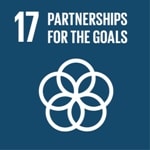 Goal 17: Revitalize the global partnership for sustainable development
Goal 17: Revitalize the global partnership for sustainable development
A key to achieving most of the SDGs is affordable, reliable, and easily installable broadband backhaul connectivity for closing the digital divide. The session is linked to at least 12 SDGs that could be helped by affordable broadband rural connectivity, in one way or another. The session is for preventing huge societal loss for sustainability.
WSIS Forum 2020 Session 267
Bridging the digital divide: how ITU-T standards enable installation of optical fibre cable in remote areas

